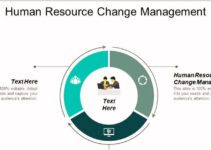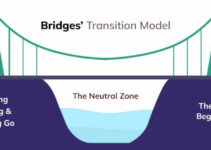Change management is a method of planning, executing, and evaluating changes to make sure that they are effective and smooth. In order to plan, implement, and maintain changes effectively; companies and individual employees need to upgrade their skills and expertise relevant to the needs and requirements. Today, we’ll discuss change management competency examples.
The process of change management comprises of following steps;
- Recognizing the need for change
- Establishing a plan
- Discussing the significance of change with employees and shareholders
- Offering support and guideline
- Listening to their feedback
- Making adjustments to the plan based on their reviews
Change Management Competency
Change management competency demands new approaches, strategies, attitudes, skills, knowledge, and capabilities from employees and companies to develop and maintain change effectively. One of their key obligations is their capability to change. By establishing their skills and competencies, organizations and employees deal with change to reach their goals and objectives.
Businesses and organizations should establish change management competencies because it allows them to achieve the following;
- Amplify their growth and profitability
- Improving loyalty and customer satisfaction level
- Employees’ satisfaction and engagement
- Improving performance
- Adapting to the changing circumstances
Change Management Competency Examples
Some of the top change management competency examples are as follows;
Effective Communication
As the name implies, communication means discussing the need and significance of change with the company’s employees, team members, and other stakeholders. It also comprises connecting and engaging with them during the transition phase. However, the communication competency comprises of following;
- Establishing a well-detailed communication plan
- Choosing the right communication medium
- Adjusting the message relevant to the targeted audience
- Engage with stakeholders and get their feedback
- Addressing their concerns and feedback based on their reviews
Employee engagement and effective communication play a significant role in establishing trust and confidence during the transitional phase. It develops a sense of commitment and ownership among employees to launch the change program.
When companies include employees and stakeholders in the change program; have honest and open communication. It allows change managers to amplify their success rate and decrease employee resistance to change.
Example – New Software
A company is launching a new system and software across the organization. The change leaders and change management teams outline a comprehensive communication plan and it comprises of following;
- Project progress updates regularly
- Conducting training and learning programs for employees
- A help desk that would answer questions and concerns
- Getting feedback from various stakeholders of the company
- Managing their concerns and issues during the execution process
The change process comprises communicating and engaging effectively with various stakeholders of the company. The introduction of the new software system became successful ultimately and it faced minimum resistance.
Visionary Leadership
Visionary leadership is one of the most important elements of the change management competencies. It comprises comprehending the company’s goals, objectives, and the motivational desire of employees to achieve them.
Successful leaders envision the company’s future and clearly communicate their vision with the company’s employees and stakeholders in order to boost their morale and confidence level. It allows them to establish a shared sense of purpose, credibility, and trust with employees and stakeholders relevant to the change program.
Visionary leadership plays a significant role during the change program because it gives your direction, and a sense of purpose, and builds momentum and excitement about the change initiative.
Example – Apple’s Leadership
Steve Jobs was a visionary leader of Apple, and the company was struggling back in the 90s. His visionary leadership made the Apple world’s top tech brand. He established a culture of innovation and creativity and inspired his employees and team members with his character, and it paved the way for the future growth and success of Apple.
Decision Making & Problem-Solving
As the name implies, it comprises diagnosing and fixing the problem that comes up during the transitional phase. The problem-solving and decision-making competency comprises of following steps;
- Processing and analyzing the data
- Recognizing the developing trends and pattern
- Establishing and executing solutions to the problems
It comprises making a decision by keeping in mind the company’s goals and objectives, stakeholder feedback, and relevant information and data. Decision-making plays a significant role during the change program because it amplifies the success rate and decreases the negative impact of the change. The change managers could avoid delays and disruptions by recognizing the issues.
Example – New Product Line
A manufacturing company is launching a new product line. The change management team and change leaders recognize the potential issues involved in the production processes of the new product line. Resultantly, it discovers higher-than-expected defective items. In order to deal with the issue, they take the following steps;
- Examine the data from previous product launches
- Consultation with the production experts
- Develop a solution to address the problem
- Receiving feedback from stakeholders
Finally, the team upgrades the production processes in order to deal with the potential issues. The company also takes strict quality control and precautionary measures in order to reduce the defect rate.
Managing Stakeholders
Managing stakeholders is one of the key competencies of change management. It comprises efficiently recognizing and managing the interest, concerns, and demands of stakeholders impacted by the change program. However, it involves the following steps;
- Identifying relevant company stakeholders
- Understanding their concerns and objectives
- Developing a plan
- Communicate with them
Stakeholders play a significant role and they could impact the result of the change initiative. The change managers could decrease the employee resistance level and receive their support and confidence by responding to the needs and concerns.
Example – Structural Changes
A big corporation is launching structural changes within the organization at a mass scale. The change leaders recognize the key stakeholders, employees, and managers impacted by the change program; establishing a strategy to communicate with every group. However, they receive feedback and address their concerns transparently and on time.
Adaptability
Adaptability is the capability to persist under difficult circumstances and make adjustments in difficult situations. The focus of adaptability competency is on the company’s goals and objectives while facing difficult issues and challenges. However, resilience and adaptability are difficult during the transitional phase due to uncertain and unforeseen issues.
Example – Donations Shift
A non-profit organization is facing the challenge of the shift in funding and donations. The company relies on the funding of a few major donors; a few of them withdrew their funding support due to uncertain issues. Resultantly, the non-profit organization is facing financial issues. But the company’s management has got a resilient nature and they adapting to the new circumstance and developing a new fundraising strategy.
The strategy was very simple consisting of diversifying the funding sources and improving the connection with various donors. It allowed the company to successfully deal with the financial crisis.
Conclusion: Change Management Competency Examples
After an in-depth study of change management competency examples; we have realized that competency management is highly significant for businesses and employees. If you are learning about the competency examples, then you should keep in mind the abovementioned examples in different categories.
Ahsan is an accomplished researcher and has a deep insight in worldly life affairs. He goes Live 3 days a week on various social media platforms. Other than research writing, he’s a very interesting person.


